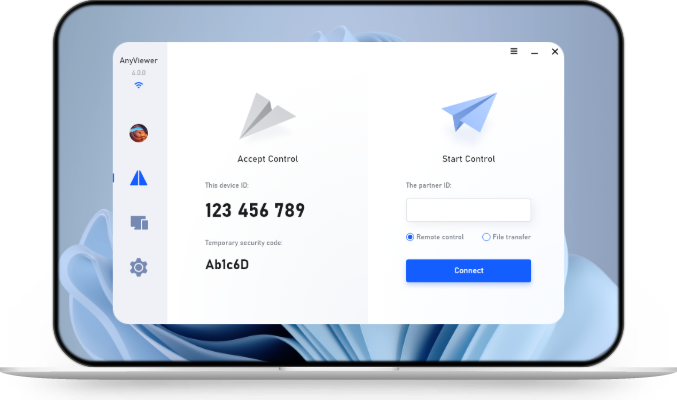How to Block RF Remote Signals: Ultimate Guide
This article explores the techniques and tools available to block RF remote signals, addressing security, privacy, and interference concerns. With an emphasis on AnyViewer as a reliable solution, readers will gain insights into protecting their devices effectively.
How to Block RF Remote Signals: Ultimate Guide
RF (Radio Frequency) remote controls have become ubiquitous in modern homes, offering convenience and flexibility in controlling various devices from a distance. However, concerns about security, privacy, and interference have led many individuals to seek ways to block RF remote signals effectively. In this comprehensive guide, we'll delve into the intricacies of RF remote signals, reasons to block them, and methods to ensure protection. Additionally, we'll introduce AnyViewer as a reliable solution for safeguarding your devices from unwanted access.
Understanding RF Remote Signals
RF remote controls operate by transmitting signals via radio waves to a receiver, typically located within the device being controlled. These signals carry commands encoded by the remote control, allowing users to perform functions such as changing channels, adjusting volume, or navigating menus. Unlike infrared (IR) remotes, which require a direct line of sight to the receiver, RF remotes can work through obstacles and over longer distances, making them popular for home entertainment systems and smart home devices.
How Do RF Remotes Work?
RF remotes operate by sending radio signals to a receiver unit, triggering a specific action such as changing channels or adjusting volume. These signals can typically penetrate walls and other obstacles, allowing for convenient control from a distance.
Vulnerabilities of RF Remotes
Despite their convenience, RF remotes are susceptible to interference and interception, making them a potential security risk. Malicious individuals can exploit these vulnerabilities to gain unauthorized access to devices.
Reasons to Block RF Remote Signals
- Security Concerns: Unauthorized access to devices through RF signals can pose significant security risks, allowing intruders to manipulate smart devices or gain access to sensitive information.
- Privacy Issues: RF signals can potentially be intercepted or hacked, compromising the privacy of users' interactions with their devices.
- Interference with Other Devices: In densely populated areas or environments with multiple RF devices, signal interference can occur, leading to erratic behavior or malfunction of devices.
Methods to Block RF Remote Signals
Several methods can effectively block RF remote signals, providing varying levels of protection:
- Physical Barriers: One of the simplest methods to block RF signals is by placing physical barriers between the remote and the receiver. Materials such as metal foil or thick walls can effectively block or attenuate RF signals, limiting the range of the remote.
- RF Signal Jammers: Signal jamming devices can disrupt RF communication by emitting interfering signals on the same frequency. While effective, the use of jamming devices may be subject to legal restrictions in some jurisdictions.
- Shielding Materials: Specialized materials such as metal foils or conductive fabrics can be used to create barriers that absorb or reflect RF signals, preventing them from reaching their intended targets.
- Remote Control Signal Blockers: These devices detect and jam incoming RF signals from remote controls, effectively blocking communication between the remote and the device.
- Frequency Hopping Spread Spectrum (FHSS): FHSS technology can prevent unauthorized access by constantly changing the frequency of RF signals. This technique makes it difficult for attackers to intercept or replicate the signals, enhancing security.
- AnyViewer: AnyViewer offers a unique solution for blocking RF remotes remotely. By leveraging its remote access capabilities, users can securely control their devices and block unauthorized RF signals from anywhere in the world.
AnyViewer as a Solution
AnyViewer is a versatile remote access software that offers more than just remote control capabilities. It provides secure remote access, support, and collaboration features, making it an ideal solution for blocking RF remote signals. By installing AnyViewer on your devices, you can establish secure connections and control access permissions, effectively preventing unauthorized RF remote access.
Why Choose AnyViewer?
- Remote Accessibility: Access your devices from anywhere, anytime.
- Secure Connection: Enjoy peace of mind with end-to-end encryption.
- User-Friendly Interface: Intuitive controls make blocking RF remotes a breeze.
- Multi-Platform Support: Compatible with a wide range of devices and operating systems.
Conclusion
In conclusion, blocking RF remote signals is essential for safeguarding privacy, security, and device functionality. By understanding the nature of RF signals and employing appropriate blocking methods such as physical barriers or signal blockers, users can mitigate potential risks effectively. Furthermore, leveraging innovative solutions like AnyViewer adds an extra layer of protection, ensuring peace of mind in an increasingly interconnected world.
FAQs:
How do I block my RF remote control signals effectively?
Effective methods include using physical barriers, RF signal jammers, shielding materials, or dedicated remote control signal blockers.
Can I use software to block RF signals?
Yes, software solutions like AnyViewer offer secure remote access and control, effectively blocking unwanted RF remote signals.
Is AnyViewer free to use?
AnyViewer offers both free and paid versions, with varying features and capabilities. The free version is suitable for personal use and basic remote access needs.

